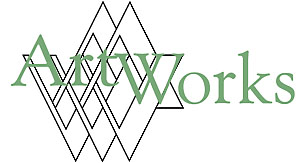
 |
Winter 2002 |
| The path to
publication Chairs Capital Grants Arts for All Grantwriting Tips Q&A for your grant application WV School districts praised Fine arts forums WV Filmmakers Festival Storytelling festival The Miracle Worker |
If you build it (AND invite them) they will comeBy Debbie Rainey Haught When The Kanawha Players, an 80-year-old community theater company in Charleston, invited me to direct The Miracle Worker by William Gibson, I was thrilled. It was a classic piece of literature full of real people with whom audiences could connect, fabulous role models for young people and a theme of hope that leaves one with that “I can do anything” feeling. The Helen Keller/Annie Sullivan relationship was inspiring, dramatic and funny. What more could a director want? Well, I’m glad you asked! I wanted to involve the disability community. I wanted help with understanding how people who are deaf-blind move and eat and find their way. I hoped for auditioners with disabilities. I wanted the audience, cast and crew to be inclusive. I wanted the real story. The first step was to make sure that the auditions and rehearsals were held in an accessible facility. Luckily, our community has access to the West Virginia Rehabilitation Center (WVRC) in Institute. A beautiful theater is housed in its recreation facility. Kanawha Players partnered with the Center to use the space and to involve teachers, caregivers and students in the production. The newly opened Southridge Church, built with universal design in mind — one floor, wide doors, accessible restrooms and parking — also offered us rehearsal space. The second step was to make sure that information about the play got out to the whole community. Again, the partnership with the WVRC was perfect, since the communication networks were already in place for sharing information with people with disabilities. We advertised an American Sign Language (ASL) interpreted performance (newspaper, radio, posters) for the second Friday night of the two performance weekends as well as sign- interpretation for the three school performances. We rehearsed under the watchful eye of WVRC staffer Roger Cain. He and the students attending evening rehearsals would point out our faux pas and help us understand the physicality of deaf- blind individuals. Staff interpreters assisted with introductions for cast and students, allowing us all to ask questions and share ideas. The entire cast learned to finger spell — a slower, more cumbersome way to communicate than modern ASL, but helpful within the context of the play. Showtime arrived. Our school performances played to 1,500 young people who learned valuable lessons about abilities and disabilities. More than 30 people with hearing and visual disabilities attended a signed school performance. Our interpreters sat on stools at audience level in a well-lit area. Their white-gloved hands were amazing to watch, but their facial expressions and body language made them very much part of the action. Our public performances also showed that there is a market for ASL interpreted shows. Eighteen audience members requested services of the sign interpreter at the box office and two deaf- blind audience members were in attendance. Our cast was very excited that someone with the same disability as Helen Keller was able to be in the audience for our production. Did I manage everything I wanted to do in the six weeks of work on this show? No. I had no actors with disabilities. I had several interested watchers at rehearsals and lots of questions, but no actors. I felt ill-equipped when interacting with the WVRC students, but they were so warm and understanding of my shortcomings that we made communication happen. I had trouble locating qualified sign-interpreters (although the four women I found were wonderful). There aren’t a lot of them available. Too many people want these skilled communicators to interpret for free. Many interpret as part of their day job and have lives and families. They should be paid for additional interpreting after work hours. There are companies that provide sign interpreters for such events; Sign Works in Fairmont was the only nearby one I could locate. I learned a lot! My cast, which included 18 people under the age of 18, was changed. We got comfortable communicating in new ways. Although we could never truly understand, the cast felt as if they had walked a mile in someone else’s shoes. I learned that partners make it possible, and never to rule out anyone as a partner. Each time we reached out, the circle of possibility grew — and our world and our audience base expanded. The positive aspects were many, but the overwhelming evidence was this: If you invite them, they will come. Building an audience or volunteer base among the disability community doesn’t just mean accommodation — it means inclusion. It takes time for people to know they are welcome, and that includes all segments of the community. Ask yourself, “Are we leaving someone out?” Then open the door and invite them in. |